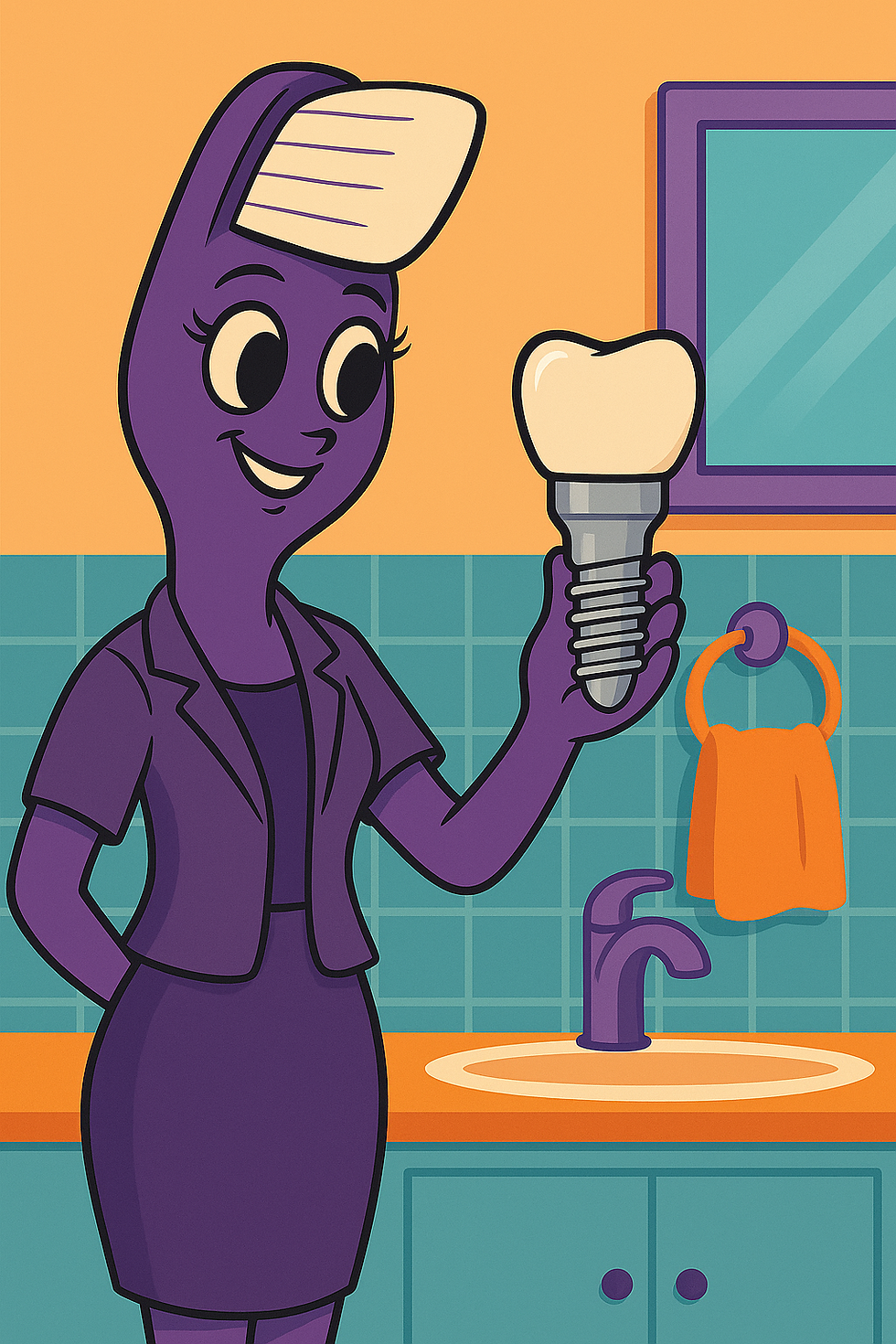Zap! Less Radiation, More Insight: The Lowdown on Digital Dental X-Rays ⚡
- naytoghlo
- Apr 16
- 3 min read
Updated: Apr 23

Hey everyone, Dr. Noor here! 👋 Today, we're tackling a topic that sometimes makes people pause: dental X-rays. You know the routine – maybe we drape that heavy-ish apron over you and pop a little sensor or film in your mouth for a quick picture.
Sometimes I get asked, "Are these really necessary?" or hear concerns about radiation. Totally valid questions! So, let's pull back the curtain and chat about why these images are one of our most valuable tools and address that radiation question head-on.
Why Bother with X-Rays Anyway? Seeing is Believing (Especially What's Hidden!)
Think of it this way: your teeth are like icebergs. What we see just looking in your mouth is only part of the story. So much can be happening below the surface, between the teeth, or inside the jawbone where the naked eye just can't see.
Dental X-rays are our crucial diagnostic superpower! They let us peek into these hidden areas to catch potential problems when they're small and easier (and often cheaper!) to treat. Without them, we'd basically be guessing about a huge part of your oral health.
Okay, But What About the Radiation? Let's Get Real.
This is the big question, right? Nobody loves the idea of radiation. But here’s the fantastic news: modern digital dental X-rays use incredibly low levels of radiation. Technology has come a long way!
To put it into perspective, let's talk about everyday radiation exposure we all get just living on Planet Earth:
The Banana Factor: Did you know bananas contain naturally occurring radioactive potassium? You'd get a tiny dose just from eating one! The radiation dose from a single digital dental X-ray is often compared to eating a small bunch of bananas. 🍌🍌🍌 (The exact number varies, but you get the idea – it's small!).
Flying High: Taking a cross-country flight exposes you to cosmic radiation from the atmosphere. A set of routine dental X-rays (like the four "bitewings" we often take) typically involves less radiation exposure than that single flight. ✈️
Just Being Alive: We're constantly exposed to low levels of background radiation from the sun, soil, and air. The radiation from routine dental X-rays makes up a tiny fraction of the natural background radiation you get every year.
We also follow the ALARA principle – "As Low As Reasonably Achievable." This means we only take X-rays when necessary, use the lowest possible dose, and always use protective measures like the lead apron (which offers extra shielding, even though the dose is already minimal with digital!).
So, What Secrets Do X-Rays Reveal?
These little images are detectives! They help us spot things like:
Cavities hiding between teeth: These sneaky ones are often invisible otherwise until they get big.
Cavities under existing fillings: Old fillings can sometimes leak, letting decay start underneath.
Bone loss associated with gum disease: X-rays show the bone supporting your teeth, helping us diagnose and monitor periodontal issues.
Infections or abscesses at the root tips: These often don't hurt initially but need treatment.
Cysts or tumors (rare, but important!): Early detection is key.
Impacted teeth: Like wisdom teeth growing in sideways.
Developmental issues in kids and teens.
Pretty important stuff, right? Catching these early saves you discomfort, time, and potentially more complex treatments later.
How Often Do I Need Them?
This isn't one-size-fits-all! It depends on your individual risk factors – your history of cavities, your gum health, your age, and what we see during your clinical exam. We tailor the frequency of X-rays specifically to you.
The Takeaway
Dental X-rays, especially modern digital ones, are a safe and absolutely essential part of providing thorough, high-quality dental care. The diagnostic benefits they offer far, far outweigh the minimal radiation exposure involved. They allow us to find and fix problems early, keeping your smile healthier and preventing bigger issues down the road.
So, next time we recommend X-rays, know that it's based on giving your smile the best possible care by seeing the whole picture. As always, if you have any questions or concerns, please ask! We're always happy to chat.
Here's to healthy smiles, inside and out!
Dr. Noor N. AyToghlo



Comments